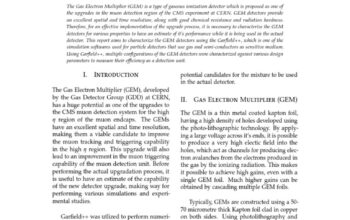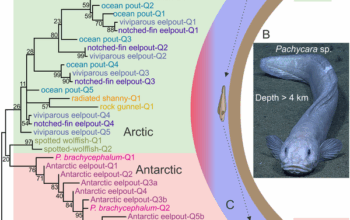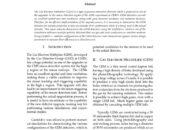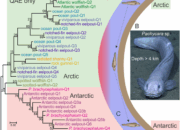The quest to measure the velocity of light is a fascinating chapter in the annals of physics, entwining itself within the broader tapestry of scientific inquiry and the evolution of human understanding. The velocity of light, approximately 299,792 kilometers per second, has not only served as a cornerstone in the discipline of physics but has also fundamentally altered our perception of space and time. Who, then, deserves the accolade of being the first to measure this astronomical speed? This exploration requires a journey through time, involving a plethora of ingenious minds from antiquity to modernity.
Initially, the ancient Greeks approached the phenomenon of light with philosophical inquiries rather than empirical measurements. Philosophers like Empedocles and Euclid theorized about light without the aid of calculus or advanced mathematics. Their contemplations laid the groundwork for subsequent inquiries, yet a tangible measurement remained elusive for centuries. It was not until the Renaissance that the dialogue shifted from abstract thought to the empirical scrutiny we associate with modern science.
One pivotal figure in this emerging narrative was Danish astronomer Ole Rømer, whose observations in the late 17th century marked a significant milestone. Rømer conducted a meticulous study of the motions of Jupiter’s moon Io. By observing the periodic time intervals between Io’s eclipses as Earth and Jupiter moved in their respective orbits, Rømer deduced that variations in the observed timings were due to the finite speed of light. Specifically, when Earth and Jupiter were at their closest approach, Io appeared to eclipse more quickly than when they were at their farthest distance. Rømer estimated the speed of light to be approximately 220,000 kilometers per second—albeit not close to the modern figure. Nevertheless, this was the first quantitative approach to understanding light’s velocity.
Following Rømer’s work, the French physicist Hippolyte Fizeau conducted a more direct measurement in 1849. Utilizing an elaborate apparatus that involved rotating toothed wheels and mirrors, Fizeau aimed to measure the light’s travel time over a known distance. In his experiments, he observed the light emitted from a source, which traveled to a distant mirror and was reflected back. The rotation of the toothed wheel created a gap whereby the observer saw a strobe effect. This fascinating rudimentary approach effectively allowed Fizeau to calculate the speed of light more accurately, yielding the figure of approximately 313,000 kilometers per second. This marked a monumental leap forward in our understanding and cemented Fizeau’s rightful place in the annals of the history of physics.
However, credit for the first precise measurement of the speed of light is often attributed to Albert Michelson, who built on Fizeau’s work. In the late 19th century, Michelson utilized an interferometer, a more sophisticated and precise instrument designed to measure the interference patterns generated by light. He conducted numerous experiments and ultimately refined the measurement to assess the speed of light with remarkable accuracy, arriving at a value of 299,796 kilometers per second. His efforts not only exemplified the scientific method but also won him the Nobel Prize in Physics in 1907, bestowing him with recognition as the foremost figure in this particular specialization.
Although one might be inclined to perceive the question of “who was first” as a mere historical footnote, the implications of these early experiments continue to resonate throughout multiple disciplines. From the realms of astrophysics to the foundational concepts of relativity, the velocity of light plays an essential role in our understanding of the universe. Moreover, it has spurred countless debates about the nature of reality itself—prompting questions concerning simultaneity, the structure of spacetime, and the limitations of human perception.
The velocity of light serves as a cosmic speed limit, fundamentally entwined with the fabric of the cosmos. It raises intriguing philosophical questions about the nature of existence itself. Why is this constant pivotal? What are its implications on our understanding of time travel, causality, and the very essence of light? As we ponder these deeper issues, the velocity of light becomes more than just a numeral; it metamorphoses into a symbol of our relentless pursuit of knowledge and understanding. It embodies humanity’s intrinsic fascination with the cosmos and our desire to decipher its mysteries.
In contemporary physics, the significance of the speed of light has expanded into realms such as quantum mechanics and cosmology. Current explorations in particle physics often hinge on understanding how light propagates, interacts, and influences fundamental particles. In cosmological models, theories about the expanding universe have led to extraordinary implications about the role of light, impacting our comprehension of dark matter and dark energy. Thus, the legacy of those who ventured to calculate the speed of light has transcended their original findings, cementing their contributions as cornerstones in the foundation of modern scientific thought.
In conclusion, while Ole Rømer stands out as the pioneer who first proposed the finite speed of light, the achievements of Fizeau and Michelson illustrate the evolution of scientific inquiry. The enterprise of measuring this fundamental constant is not merely an academic endeavor but a deep-rooted human fascination with the nature of reality. Each step in the measurement served to push the frontiers of human knowledge further, unveiling both intricacies and simplicities within the cosmos. This thrilling narrative serves as a reminder that science is not merely a collection of facts but a journey—one filled with curiosity, ingenuity, and relentless pursuit of understanding.








